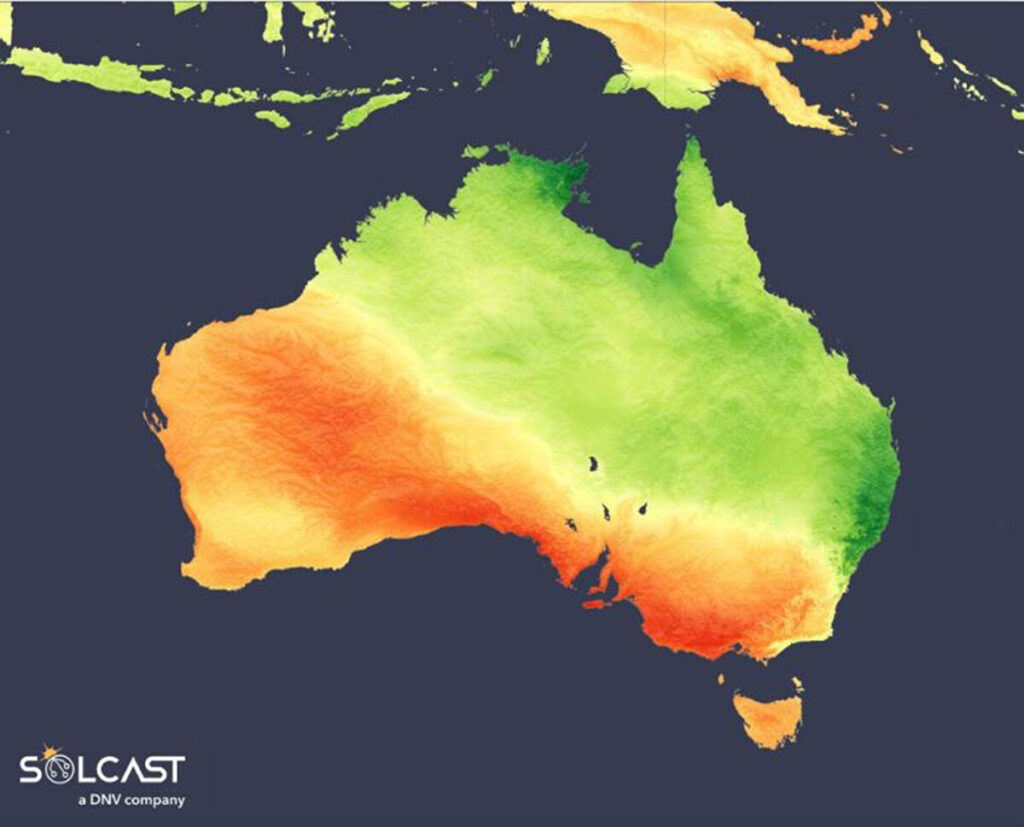In a new weekly update for PV -MagazineSolcast, a DNV company, reports that radiation in large parts of East -Australia fell to 20% under the seasonal standard in Autunm.
In a similar pattern such as in recent years, a persistent high-pressure system than South Australia has derived the usual cloud-bearing southern fronts. Instead, moisture from the coral sea has been pulled deep into East Australia, which means that a clear contrast in irradiations is sent throughout the country. According to analysis using the Solcast API, this pattern suppressed cloud formation and rainfall in the south and west, while leading moist, rain -bearing air in the north and east.
During the fall, an unusual stationary high-pressure system that extends over South Australia and the Tasman Sea reversed weather systems, while we reinforced Winden Winden from the Coral Sea. This setup brought moist air into the interior, which led to more persistent cloud formation and rainfall. The result was a clearly cloudy season for Queensland, New South Wales and the Northern Territory. Instead of the frontal systems and cooler southern southern for the period, a large part of the east fought with extreme rain events and modest solar radiation. The impact was sharp: irradiation over large parts of the east fell to 20% below the season standard.
Early autumn rainfall in Queensland was still influenced by the persistent moisture of ex-tropical cyclone Alfred, with daily totals that surpass 100 mm. Later in the season, Bellen in Noord -NSW registered more than 300 mm in a single May event. These big,
Concentrated rain events feel all too often for those affected by floods and are an important change in relation to the typical pattern of smaller, lower intensive rain fronts.
In stark contrast suppressed the same high -pressure system that brought usual circumstances in the east, it in the west and south. Stretching from Western Australia through South Australia, Victoria and West-New South Wales, the high-pressure-blocked rain-bearing cold fronts and braked convective activity, causing dry, clear weather for the long time. These circumstances caused radiation levels up to 20% above seasonal averages in a large part of the Western and South Australia. The stability of the air mass also caused the structure of strong western winds, which, combined with dried out surface circumstances, also generated a substantial dust storm that came in South Australia in May and was swept by the Illawarra and Sydney -Bekkens.
Dissolved Produces these figures by following clouds and aerosols with a resolution of 1-2 km worldwide, with the help of satellite data and own Ai/ml -algorithms. This data is used to stimulate radiation models, so Solcast is able to calculate the radiation at high resolution, with a typical distortion of less than 2%, and also cloud-tracking predictions. This data is used by more than 300 companies that manage more than 150 GW of solar assets worldwide.
The views and opinions expressed in this article are the author, and do not necessarily reflect it by PV -Magazine.
This content is protected by copyright and may not be reused. If you want to work with us and reuse part of our content, please contact: editors@pv-magazine.com.
Popular content



